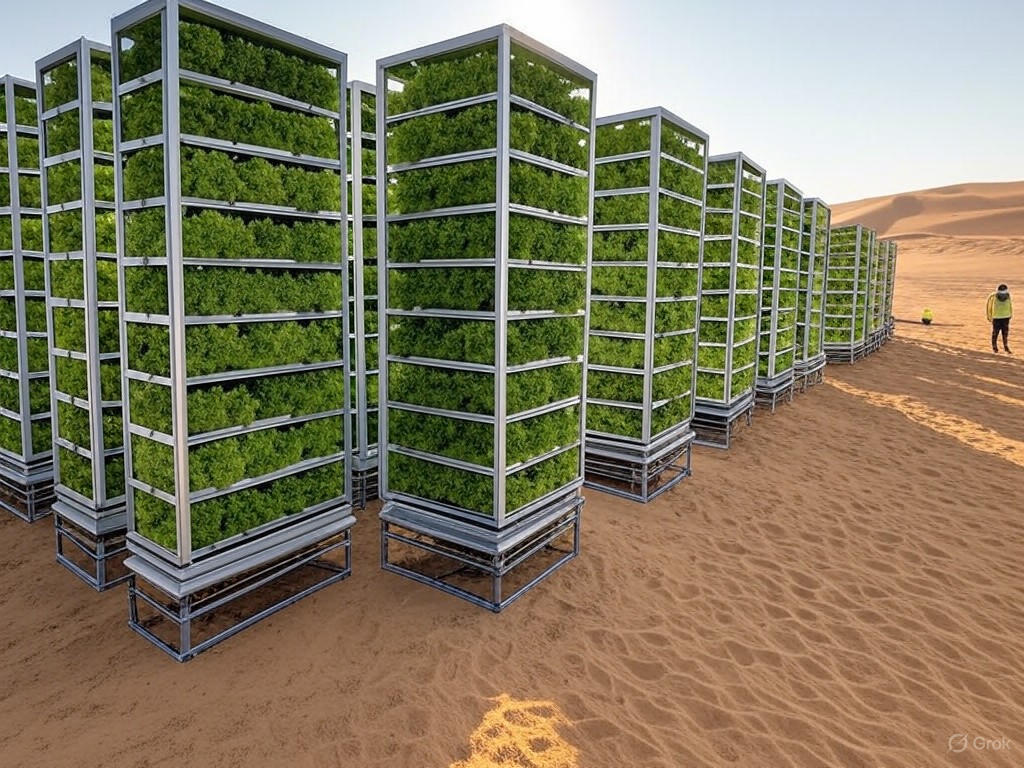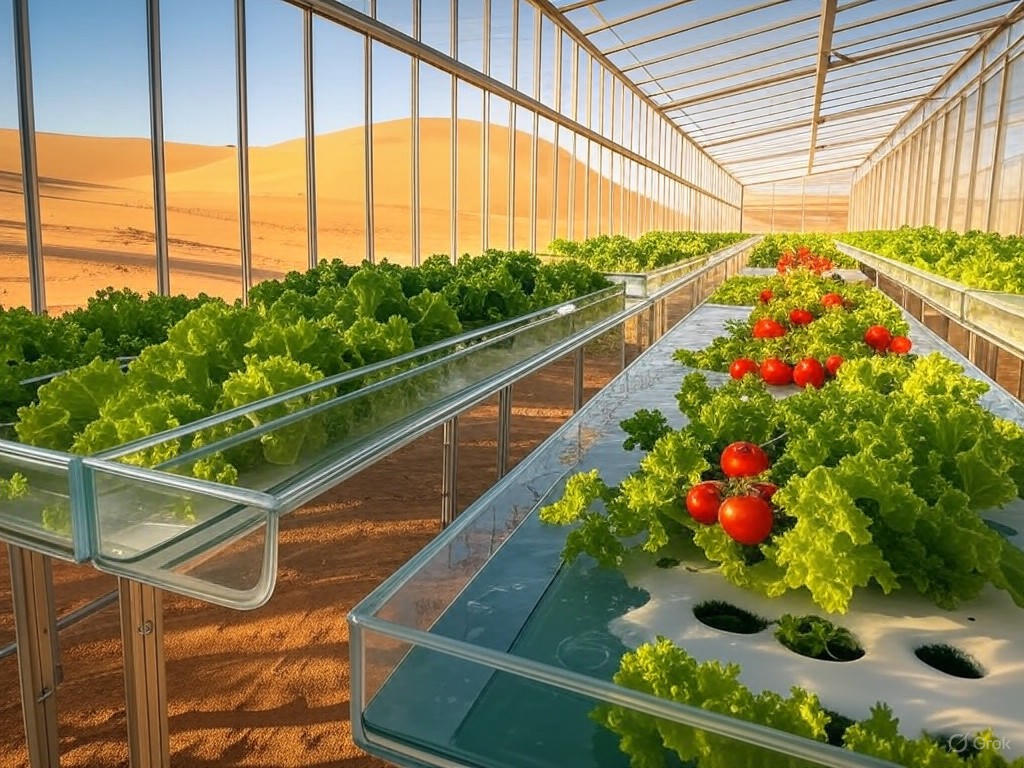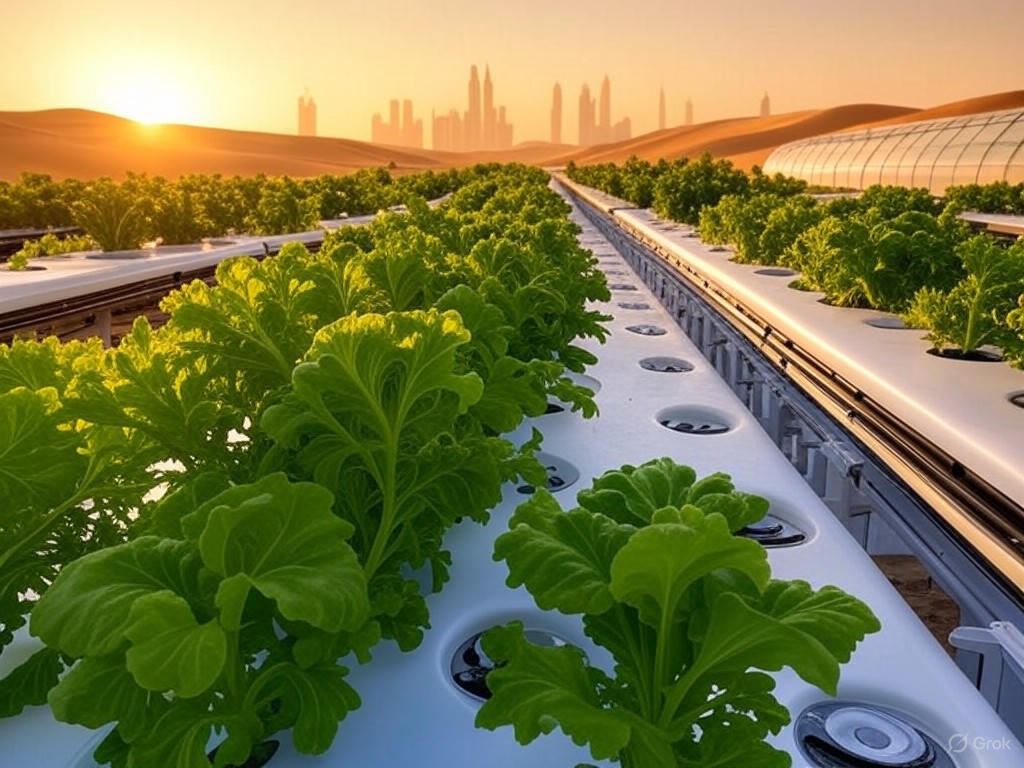Hydroponics in Dubai: Desert Agriculture
In the vast, sun-baked expanses of the Arabian Desert, where sand dunes stretch as far as the eye can see, a quiet revolution is taking root—literally. Dubai, that glittering emirate of skyscrapers and ambition, has turned to hydroponics to defy nature’s limitations and reshape urban agriculture. Far from relying on endless government subsidies or grand bureaucratic schemes, this innovation springs from the fertile soil of free-market ingenuity. It’s a testament to what happens when entrepreneurs and technology collide, proving that human resourcefulness can outsmart even the harshest environments. As we explore this transformation, we’ll see how hydroponics in Dubai not only advances agriculture and sustainability but also offers a model for urban resilience without the heavy hand of regulation.
Hydroponics, a method of growing plants without soil by using mineral nutrient solutions in water, has long been a niche curiosity. But in Dubai, it’s evolved into a cornerstone of modern farming, turning arid wastelands into productive green oases. This approach aligns with traditional values of self-reliance and efficiency, echoing the pioneering spirit of America’s heartland farmers who once tamed the frontier with grit and innovation rather than handouts. Yet, it’s the private sector’s drive that’s accelerating this change, not top-down mandates. Dubai’s success story underscores the benefits of limited government intervention, allowing market forces to foster solutions that are both practical and profitable.
The Mechanics of Hydroponics in a Desert World
At its core, hydroponics flips the script on traditional agriculture by eliminating the need for vast tracts of fertile land. In Dubai, where water is scarcer than a rainy day in July, this technology uses recirculating systems to deliver precise amounts of nutrients directly to plant roots. This not only conserves water—using up to 90% less than conventional farming—but also maximizes yields in controlled environments like vertical farms and greenhouses. Picture towering structures in the middle of the desert, where LED lights mimic the sun and sensors adjust conditions in real time, producing everything from leafy greens to herbs year-round.
This innovation isn’t just about survival; it’s about thriving in an urban setting. Dubai’s push into hydroponics is part of a broader strategy to reduce food imports, which currently account for over 80% of the emirate’s consumption. By investing in private ventures, such as those run by local entrepreneurs and international tech firms, the city is building a more self-sufficient food system. It’s a far cry from the inefficiencies of subsidized mega-farms elsewhere, where government overreach often leads to waste and dependency. Here, the free market rewards efficiency: companies that innovate stay afloat, while others fade away.
To illustrate, consider the sprawling facilities at Dubai’s Bustanica farm, a joint venture between private entities like the UAE’s own agriculture giants and global partners. This setup exemplifies how urban hydroponics can integrate seamlessly into city life, supplying fresh produce to hotels, restaurants, and markets without the environmental footprint of traditional fields.  A vertical hydroponic farm at Bustanica, where layers of greenery thrive in Dubai's controlled climate, demonstrating efficient urban agriculture.
A vertical hydroponic farm at Bustanica, where layers of greenery thrive in Dubai's controlled climate, demonstrating efficient urban agriculture.
As reported in a detailed analysis by the Wall Street Journal, Dubai’s hydroponic initiatives are driven by private investment rather than public funds, with returns measured in both economic growth and reduced import costs. This approach avoids the pitfalls of over-regulation, allowing businesses to scale quickly and adapt to market demands.
Evidence of Transformation: Economic and Practical Gains
The evidence for hydroponics’ impact in Dubai is as clear as a desert sunrise. In recent years, the emirate has seen a surge in hydroponic production, with farms yielding up to 20 times more per square foot than traditional methods. This isn’t pie-in-the-sky optimism; it’s backed by real data from operational farms. For instance, a study by the International Center for Agricultural Research in the Dry Areas highlights how hydroponics can boost crop output in arid regions, making it a viable option for food security without relying on expansive irrigation projects that often strain resources (ICARDA report).
Economically, this revolution is a boon for free markets. By attracting investment from tech-savvy firms, Dubai has created jobs in engineering, data management, and agriculture, all while keeping government involvement minimal. It’s a refreshing contrast to regions where heavy subsidies distort the market, leading to inefficiency and complacency. Hydroponics in Dubai emphasizes sustainability not as a buzzword, but as a smart business decision—reducing waste and energy use through precision technology. A piece in IEEE Spectrum delves into the tech behind this, noting how automated systems optimize water and energy, cutting operational costs by as much as 50% compared to conventional farms.
Of course, challenges persist. The initial capital for setting up hydroponic systems can be steep, and scaling requires reliable energy sources, which in Dubai often means fossil fuels. But here’s where market dynamics shine: private partnerships, like those with renewable energy providers, are stepping in to address these issues. For example, some farms are integrating solar panels, driven by competitive pressures rather than mandates. This self-correcting mechanism of the free market ensures that only the most adaptable models survive, fostering long-term growth without the need for bureaucratic oversight.
 Inside a hydroponic greenhouse in Dubai, where advanced nutrient delivery systems sustain crops amidst the surrounding dunes, symbolizing innovation over adversity.
Inside a hydroponic greenhouse in Dubai, where advanced nutrient delivery systems sustain crops amidst the surrounding dunes, symbolizing innovation over adversity.
An insightful blog from AgFunder points out that Dubai’s model could inspire similar ventures worldwide, particularly in developing regions where government aid often falls short. By focusing on private initiative, these farms promote traditional values like hard work and ingenuity, proving that innovation can flourish without the cradle of welfare.
Looking Ahead: Lessons for a Sustainable Future
As we conclude, Dubai’s hydroponic farms offer a compelling narrative for the future of agriculture—one rooted in free-market principles and limited government. This isn’t about imposing ideological agendas; it’s about recognizing that when individuals and businesses are free to innovate, they can overcome environmental challenges more effectively than any top-down policy. The lessons here extend beyond the desert: urban areas worldwide could adopt similar models to enhance food security, reduce dependency on imports, and promote economic resilience.
In embracing hydroponics, Dubai reminds us that progress often comes from the ground up, not from decrees in marble halls. It’s a nod to traditional values of self-reliance, where resourcefulness turns obstacles into opportunities. As other cities grapple with agricultural woes, they’d do well to follow this path, letting the market lead the way rather than entangling it in red tape. After all, in the words of a certain witty observer of human folly, "The best way to predict the future is to create it"—and Dubai is doing just that, one hydroponic harvest at a time.

